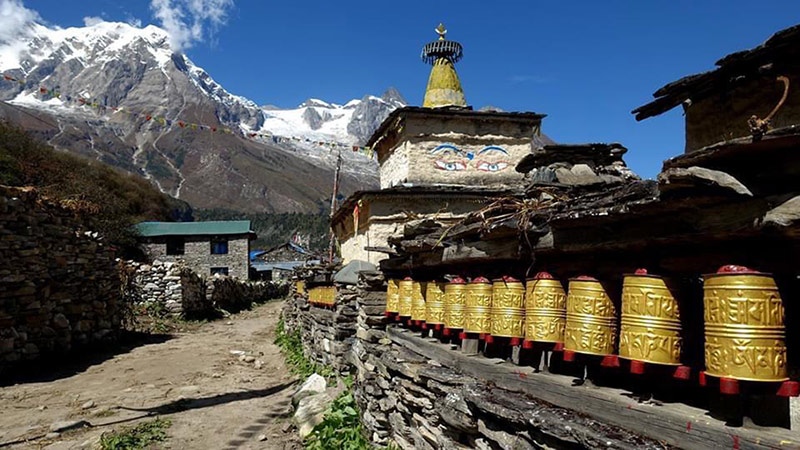Overview

The Manaslu region in Nepal is also a hidden gem for trekkers seeking adventure, natural beauty, and cultural immersion. Situated in the western part of the country, the Manaslu region also named after its crown jewel, Mount Manaslu, the eighth highest peak in the world. With its rugged terrain, pristine landscapes, and rich cultural heritage, the region offers a unique trekking experience that is often less crowded compared to other popular trekking destinations in Nepal.
Trekking in the Manaslu region provides a chance to explore remote and untouched valleys, ancient villages, and breathtaking mountain scenery. The Manaslu Circuit Trek is the most renowned trekking route in the region, offering a challenging and rewarding adventure that circumnavigates Mount Manaslu. The trail takes trekkers through diverse landscapes, including lush forests, terraced fields, and high mountain passes, providing stunning views of snow-capped peaks, glacial lakes, and cascading waterfalls along the way.
Another noteworthy aspect of the Manaslu region is its conservation efforts and commitment to sustainable tourism. The area is designated as the Manaslu Conservation Area, which aims to protect the diverse flora and fauna found in the region. Trekkers have the opportunity to observe rare wildlife, including the elusive snow leopard, Himalayan tahr, and red panda, as well as a variety of bird species. The conservation area also promotes eco-friendly practices, responsible tourism, and community-based initiatives, ensuring the preservation of the region’s natural and cultural heritage for future generations.
In conclusion, the Manaslu region in Nepal offers a captivating blend of stunning landscapes, rich cultural heritage, and a sense of wilderness. With its off-the-beaten-path trails, breathtaking mountain views, and encounters with local communities, trekking in the Manaslu region provides an opportunity for adventure, cultural exploration, and an intimate connection with nature.
Highlights
- Mount Manaslu: Standing at an impressive height of 8,163 meters (26,781 feet), Mount Manaslu is the centerpiece of the region. Its majestic presence provides a stunning backdrop throughout the trek, offering breathtaking panoramic views and a sense of awe-inspiring beauty.
- Manaslu Circuit Trek: The Manaslu Circuit Trek is a challenging and rewarding adventure that takes trekkers around the entire Manaslu massif. The trail winds through diverse landscapes, including terraced fields, dense forests, glacial valleys, and high mountain passes, providing an immersive experience in the region’s natural beauty.
- Cultural Immersion: The Manaslu region is home to diverse ethnic communities, including Gurungs and Tibetans, who have preserved their unique traditions, customs, and architecture. Trekking through remote mountain villages allows trekkers to interact with the friendly locals, witness their vibrant festivals, and explore ancient monasteries, offering an authentic cultural experience.
- Serene Wilderness: Compared to other popular trekking regions in Nepal, the Manaslu region offers a quieter and less crowded experience. The trekking trails are often less frequented, allowing trekkers to enjoy the serenity and solitude of the wilderness, undisturbed by the hustle and bustle of large groups.
- Breathtaking Views: The Manaslu Circuit Trek rewards trekkers with breathtaking views of snow-capped peaks, including Mount Manaslu itself. From the Larkya La Pass (5,106 meters/16,752 feet), trekkers can marvel at a panoramic vista of Himalayan giants such as Annapurna II, Himlung Himal, and Cheo Himal.
Conclusion
In summary, the highlights of the Manaslu region include the awe-inspiring Mount Manaslu, the challenging and scenic Manaslu Circuit Trek, cultural immersion with local communities, serene wilderness, breathtaking mountain views, wildlife encounters, and the cozy teahouse experience. These highlights combine to create a truly unforgettable journey in the heart of the Himalayas, showcasing the best of Nepal’s natural and cultural wonders.
